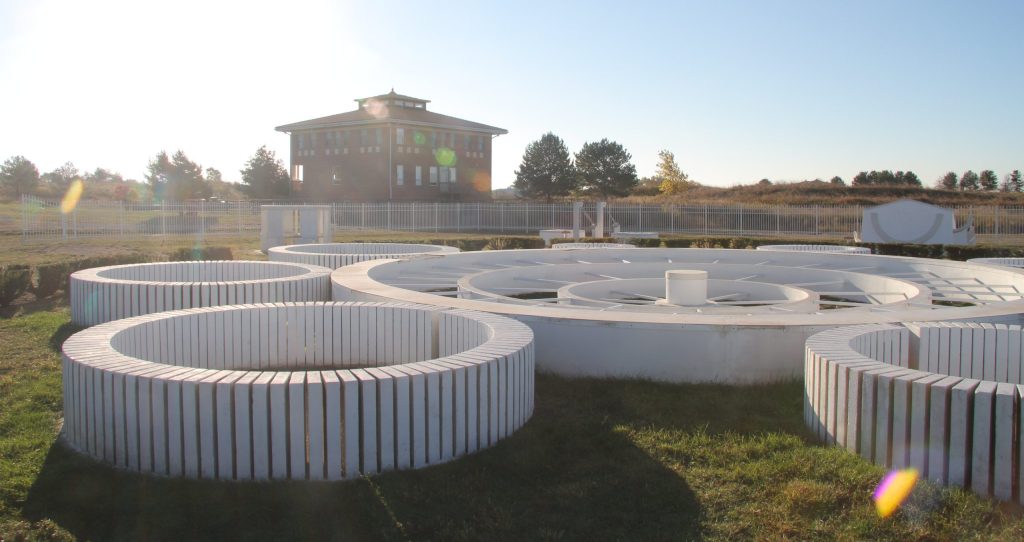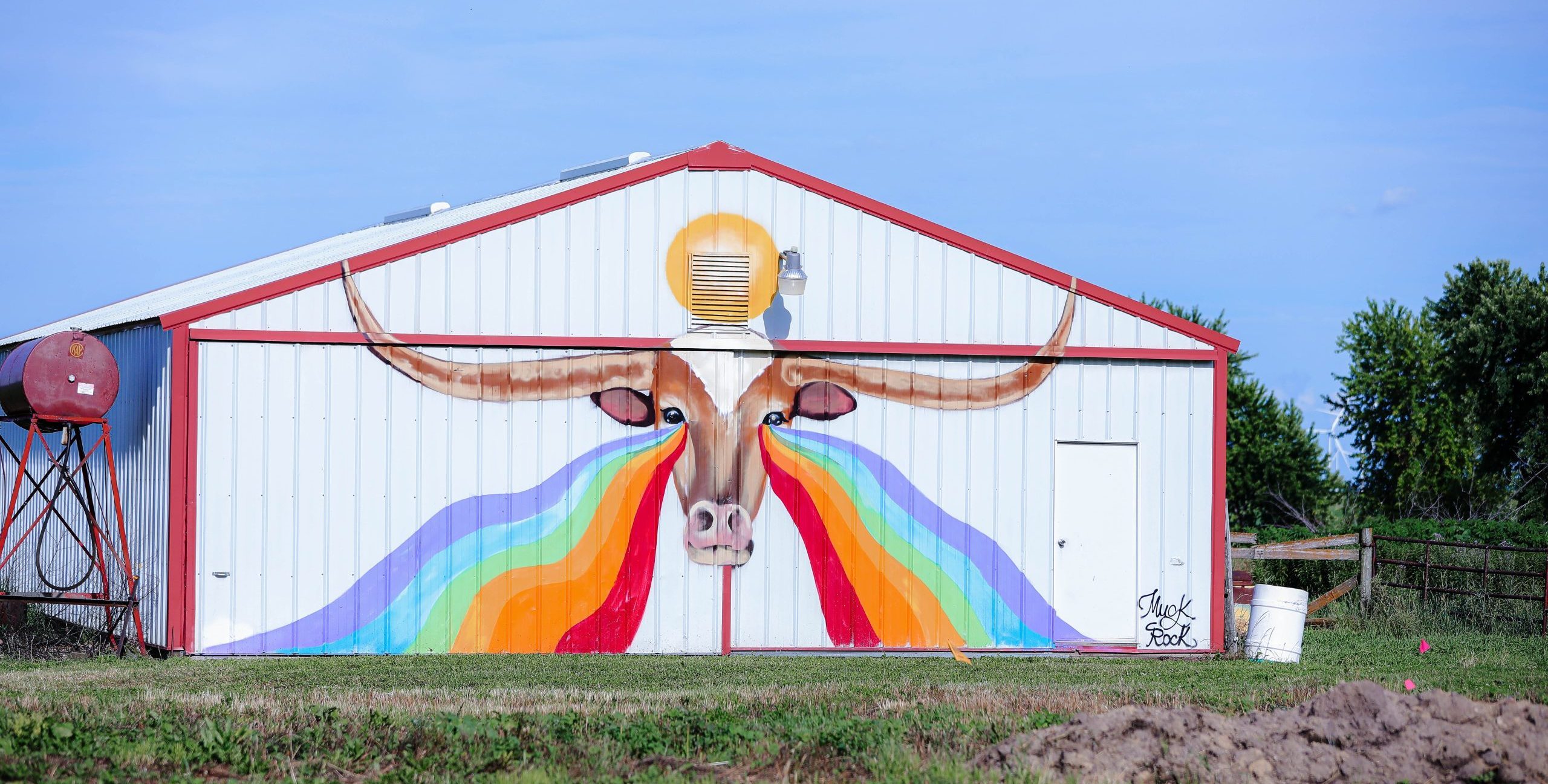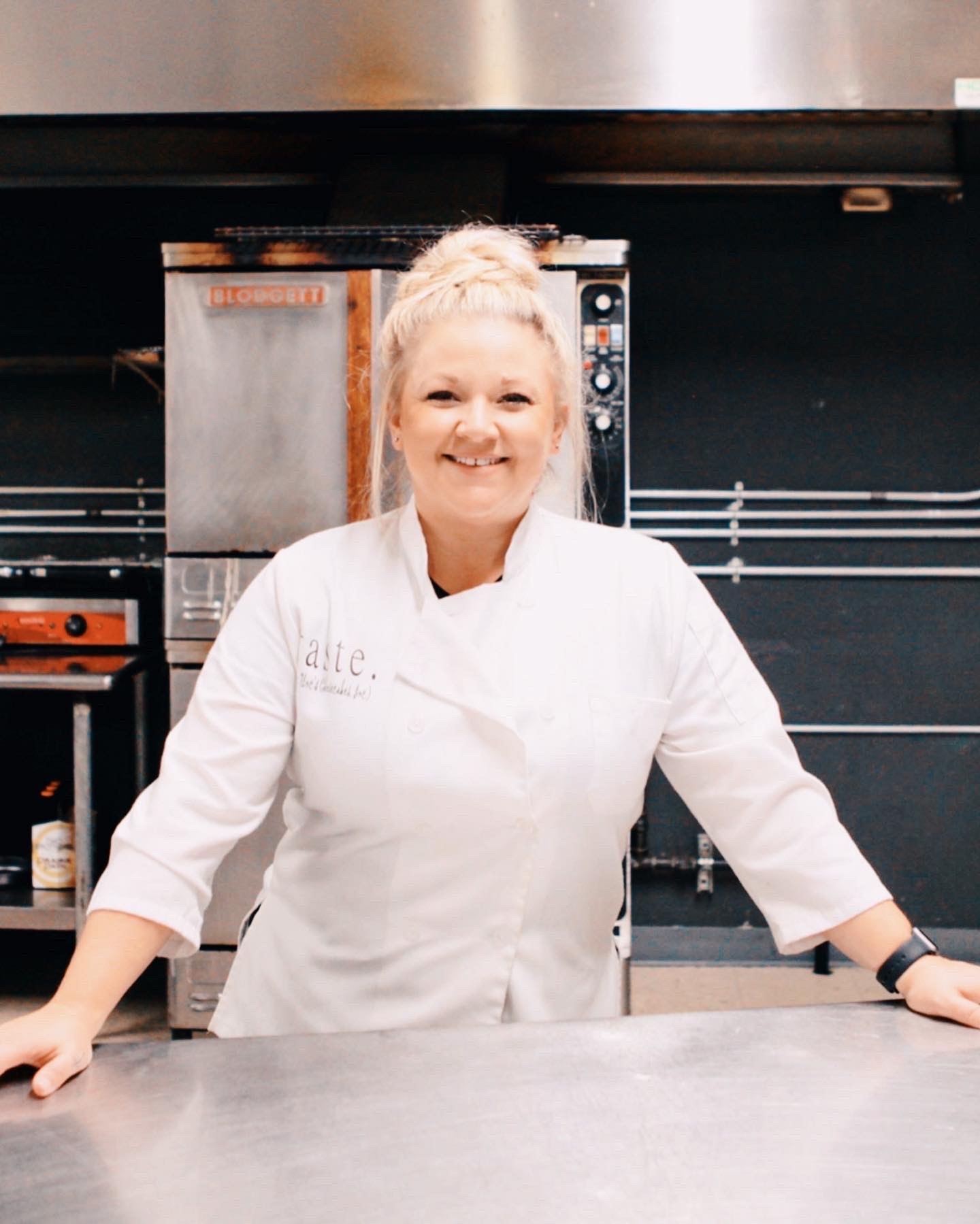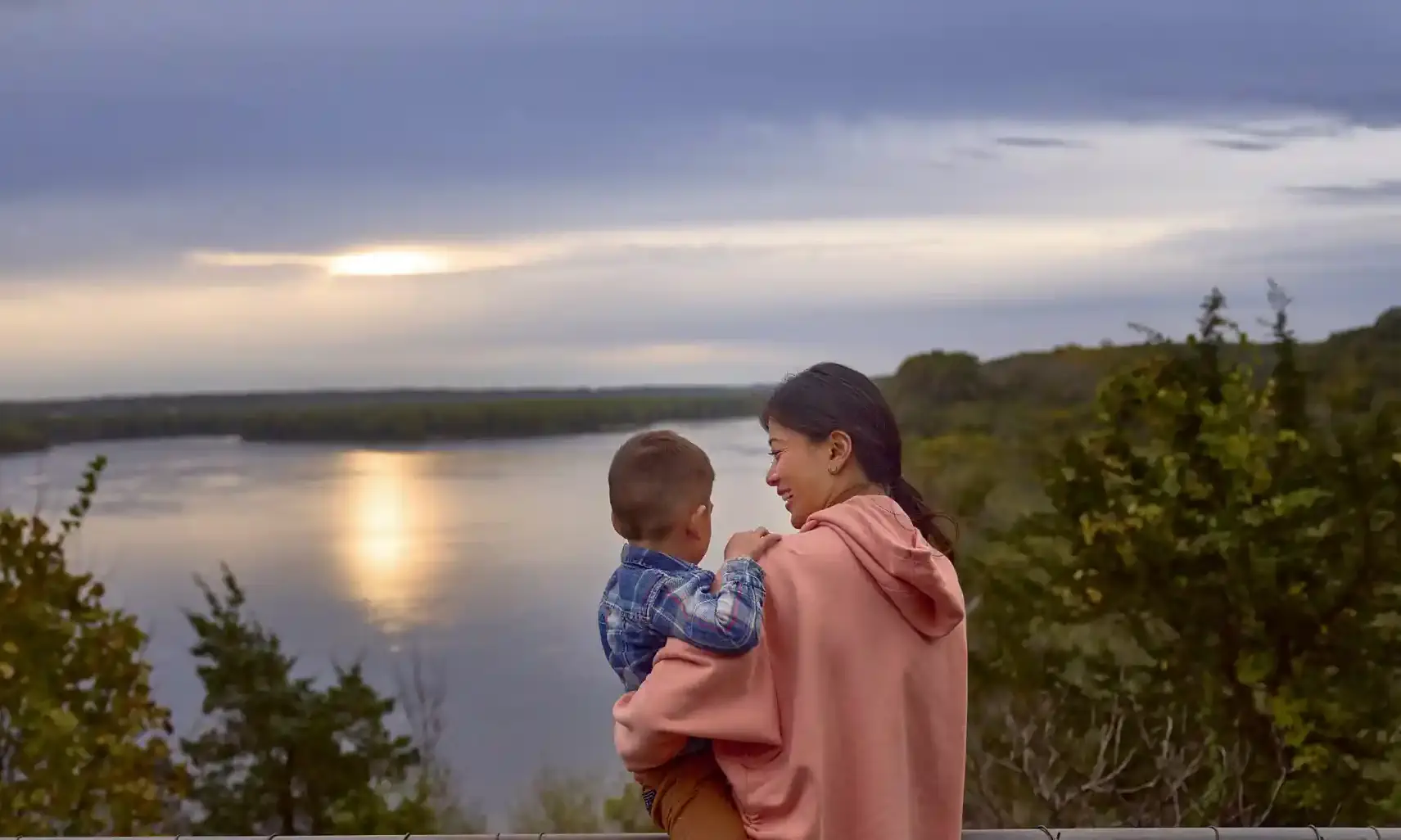Thrive in towns rich in diversity, art and outdoor opportunities
While Iowa’s communities are a great place to visit, they’re an even better place to put down roots. These towns are especially charming, and their strong community investments, diversity initiatives, art projects or outdoor recreation opportunities make it even easier to picture yourself living here.
Art Hotspots
Council Bluffs & Dubuque
Though historic architecture abounds throughout Iowa, the state’s thriving art scene is creating a different kind of revitalization. As public art and beautification become a larger priority, cities like Council Bluffs and Dubuque are at the forefront.
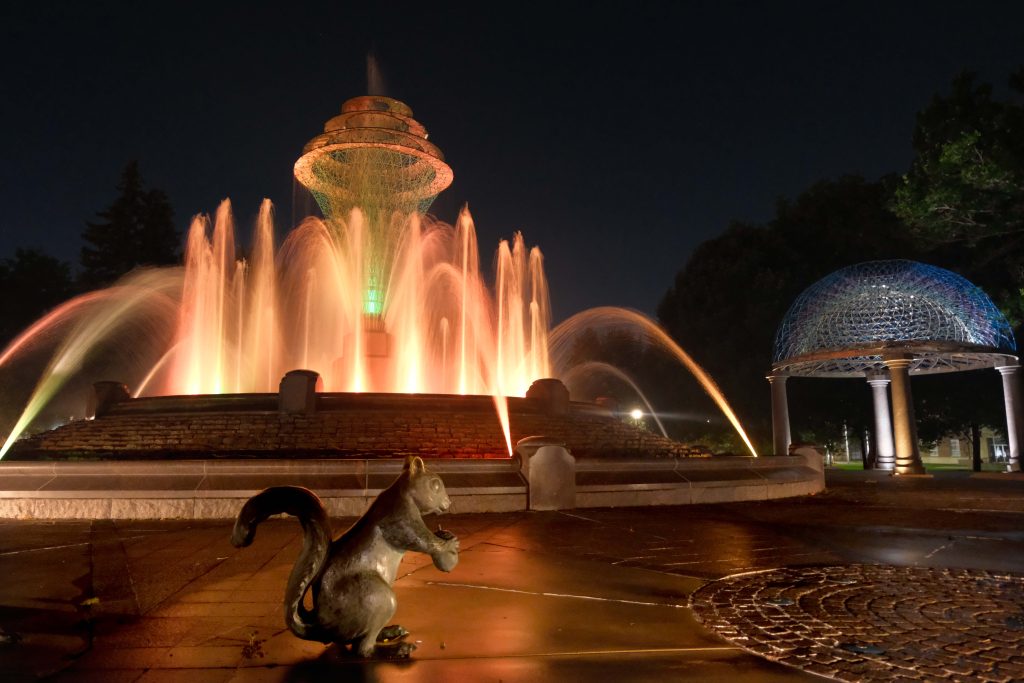
On Iowa’s western border along the Missouri River, Council Bluffs is home to some of the state’s most iconic historic attractions, such as the Squirrel Cage Jail, RailsWest Museum, Western Historic Trails Center and the General Dodge House. With the start of the Iowa West Public Art Project in 2004, these popular destinations have since been joined by stunning sculptures that have appeared in over 50 sites throughout the community. Many were created by internationally renowned artists — Bayliss Park’s fountain and performance pavilion are the works of Brower Hatcher, who has received three National Endowment for the Arts Fellowships. Residents and visitors can put their own art skills to the test at the Hoff Family Arts & Culture Center, which offers classes for families and adults year-round alongside art galleries, artist studios and more.
Across the state on the banks of the Mississippi River, Dubuque has a similar art focus — the city’s historic brick buildings are not only renovated, but also adorned with a multitude of bright murals.
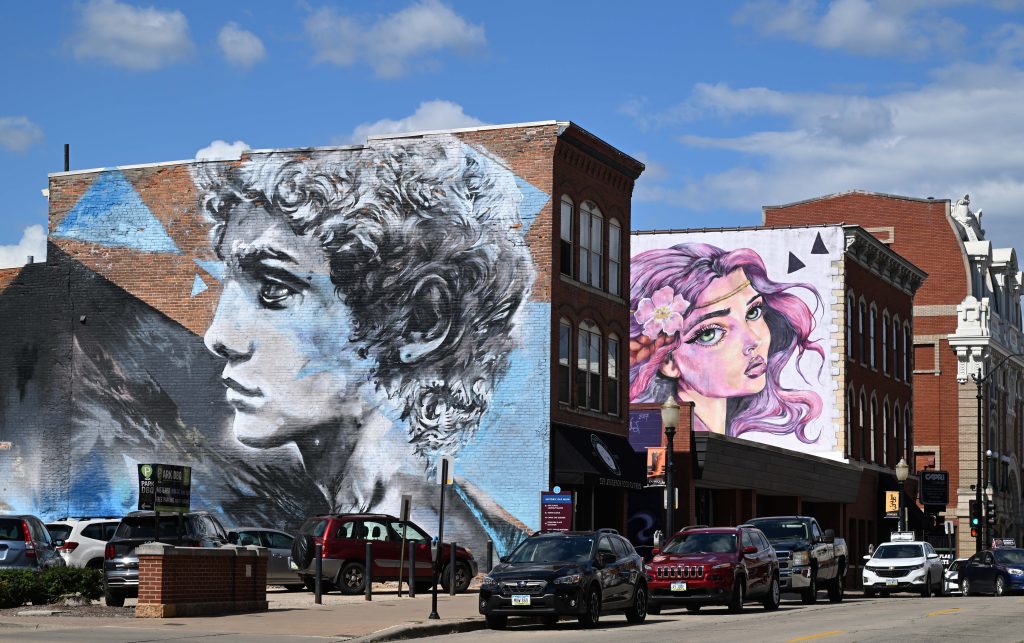
This project was started in 2014 by Voices Productions, a volunteer, nonprofit organization that worked with world-renowned artists to transform Dubuque into a cultural landmark destination. It started with a gallery show held in the Historic Millwork District and grew to include more than 40 murals throughout the community.
The most recognized murals include “Greetings from Dubuque,” a vintage postcard mural located between 10th Street and Jackson Street, and “United in Solidarity,” located at the Five Flags Center. The community’s monster murals are also some of the most photographed in the state.
Diversity Star
Marshalltown
Known as one of the most ethnically diverse communities in the state (its school district has documented more than 50 languages among student families), Marshalltown is embracing its cultures through a variety of redevelopment projects.
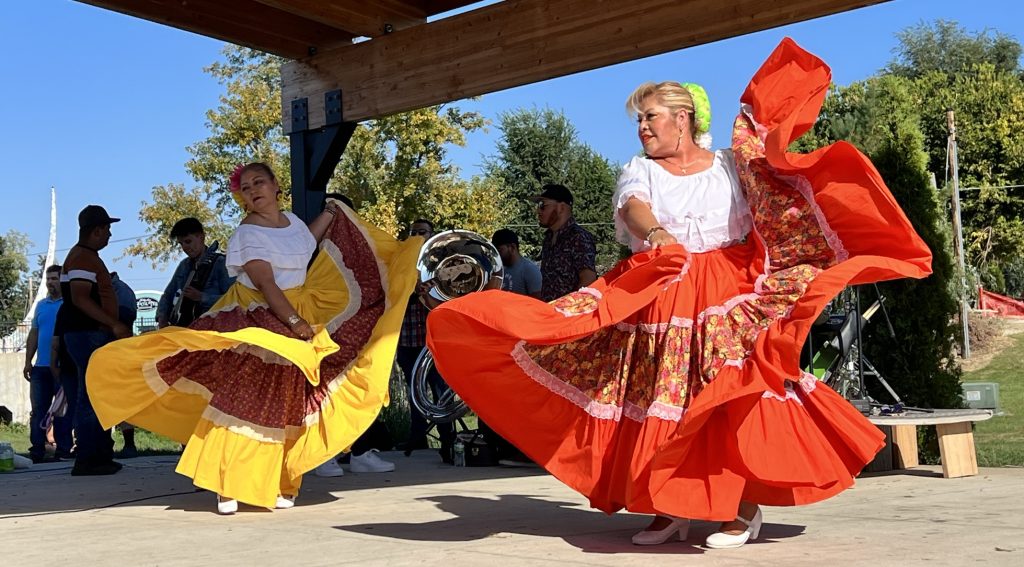
Along with its historic downtown, which boasts a strong collection of shops and restaurants, Marshalltown’s Linn Creek District is part of a larger project that will add more color to the downtown, provide spaces for residents to celebrate their cultural traditions and create more housing opportunities for current and future residents.
A main part of the project includes building the interactive Linn Creek Water Plaza with the goal of highlighting the area’s Burmese and Latino communities and serving as a public gathering space. The plaza is set to be completed in 2025 and will be ADA accessible as well as connect to local trails and add to the community’s myriad cultural attractions, including the Mega-10 Park, Marshalltown Arts & Civic Center, Orpheum Theater, Martha-Ellen Tye Playhouse and lighted futsal courts at West End Park.
The overall project also includes 35 new construction market rate rental homes with plans to add single family homes, all within walking distance of Linn Creek District.
Marshalltown’s new bilingual tourism campaign, Nos Vemos en Marshalltown, is also playing a large role in uplifting its Latino population and introducing visitors to all the community has to offer.
Historic Districts Hub
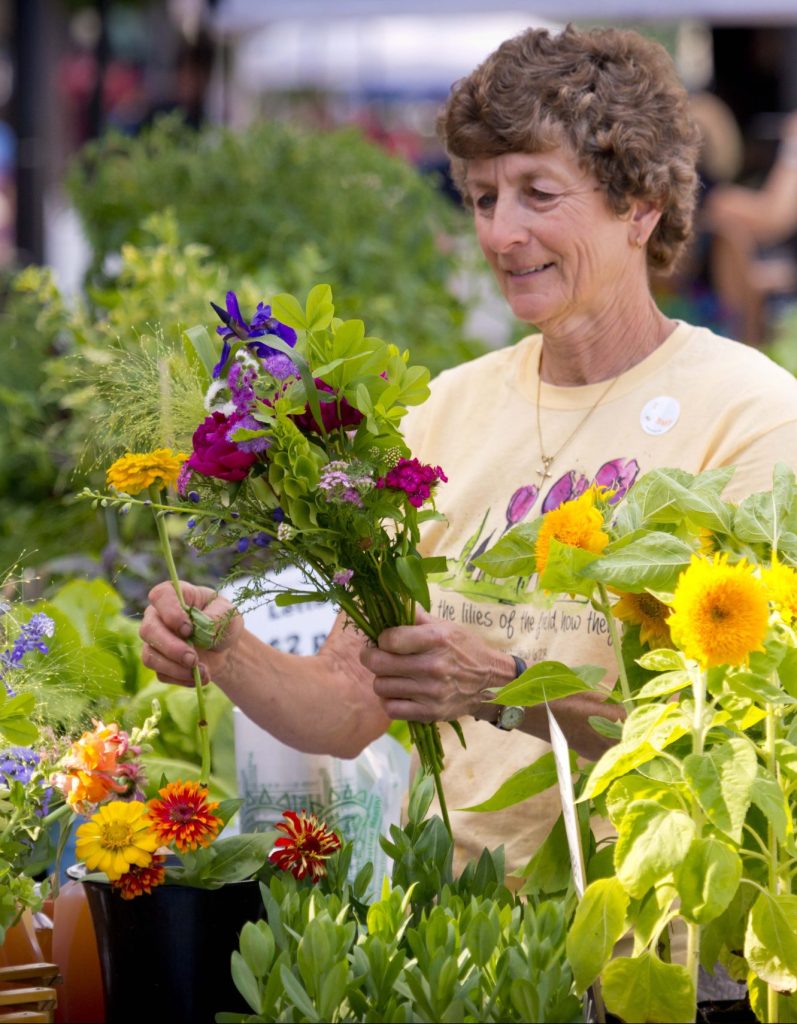
Des Moines Metro
Des Moines’ historic districts not only show off the capital city’s historical architecture, but also create a close-knit community atmosphere that makes you feel right at home.
One of the best shopping spots in the Des Moines area, Historic Valley Junction was founded in the 1890s and today boasts more than 160 specialty shops, art galleries, boutiques, restaurants and more. The area is a delightful mix of old and new and is home to several attractions. Stop by The Hall to sample craft brews and dishes from rotating food trucks; hop on the Jordan Creek Trail and bike to the bustling West Glen Town Center or the peaceful Gray’s Lake Park and Downtown Des Moines; or attend local events like the Valley Junction Farmers’ Market and Music in the Junction.
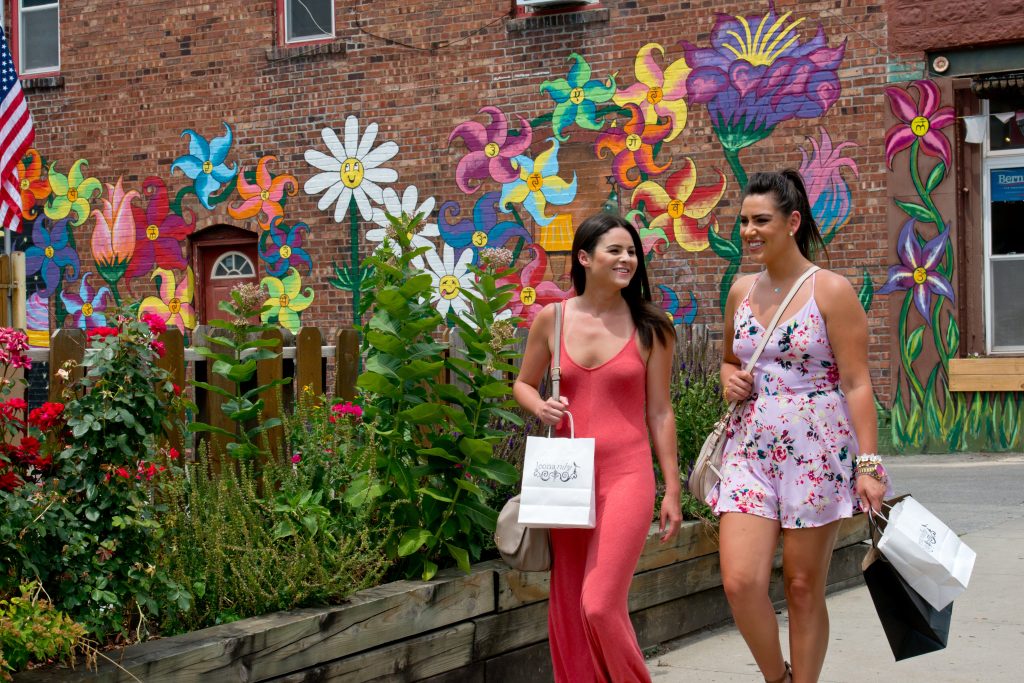
Discover more exciting shops and events alongside amazing views of the capitol building in the Historic East Village. This former industrial center’s 150-year-old brick buildings have since transformed into stunning apartments on the upper levels and boutique shops and restaurants on the lower levels. Stroll the streets to shop quirky merchandise at Raygun, clever woodworking at Sticks Furniture and paper goods at The Permanent Collection, then grab a signature burger or shake from Zombie Burger, a sweet cinnamon roll from Cinnaholic or a delicious pasta dish from Lucca. Before you go, test your retro arcade skills at Up Down or tour the stunning Greater Des Moines Botanical Garden.
Admire more historic brick architecture throughout the Beaverdale neighborhood, the largest neighborhood in Des Moines and renowned for its brick homes and tree-lined streets. This area is also known for its long legacy of community support, which is shown through its variety of locally owned and independent retail and service businesses. Its restaurant scene is one of the city’s finest, featuring a diverse collection like the Flying Mango, a BBQ eatery; Christopher’s, an authentic Italian restaurant; and Oh Sushi, alongside popular dessert spots like Snookies Malt Shop and Beaverdale Confections. While strolling the neighborhood’s streets, you can also explore over 50 acres of public parkland and multiple little libraries.
Preservation Prodigy
Mount Vernon
Walk through even more history with a stroll through Mount Vernon’s Commercial District, where historic brick buildings have been preserved and filled by locally owned businesses. Several of the buildings are also included on the National Register of Historic Places. Today, Glyn Mawr Winery/The Local is located in the 1881 E.D. Waln Building; Fuel, an art and espresso shop, resides within the 1881 Wolfe-Ellison block; and The Angel’s Nest/Hands in Harmony metaphysical shop occupies the 1892 Charles Kepler building. Some have even been preserved in their original glory — Bauman’s has been a men’s formal dresswear store since 1909, and was saved in 2018 by a local couple who expanded it to include women’s clothing and a shoes department.
Further down the road, the community’s former high school, built in 1927, has since transformed into a community gathering space. Now known as the First Street Community Center, the school’s former classrooms house local businesses including a quilt shop, antique collections, a photography business, sewing and crafting studios plus five rental spaces. A local theater group called The Uptown Theatre hosts diverse performances in the school’s auditorium.
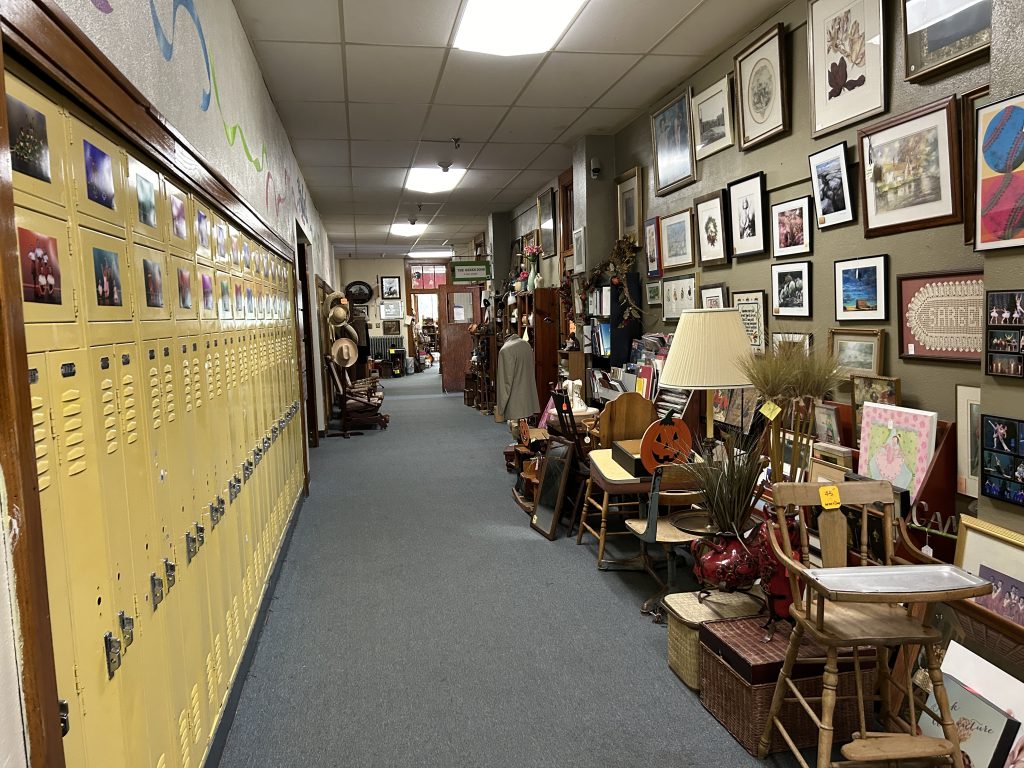
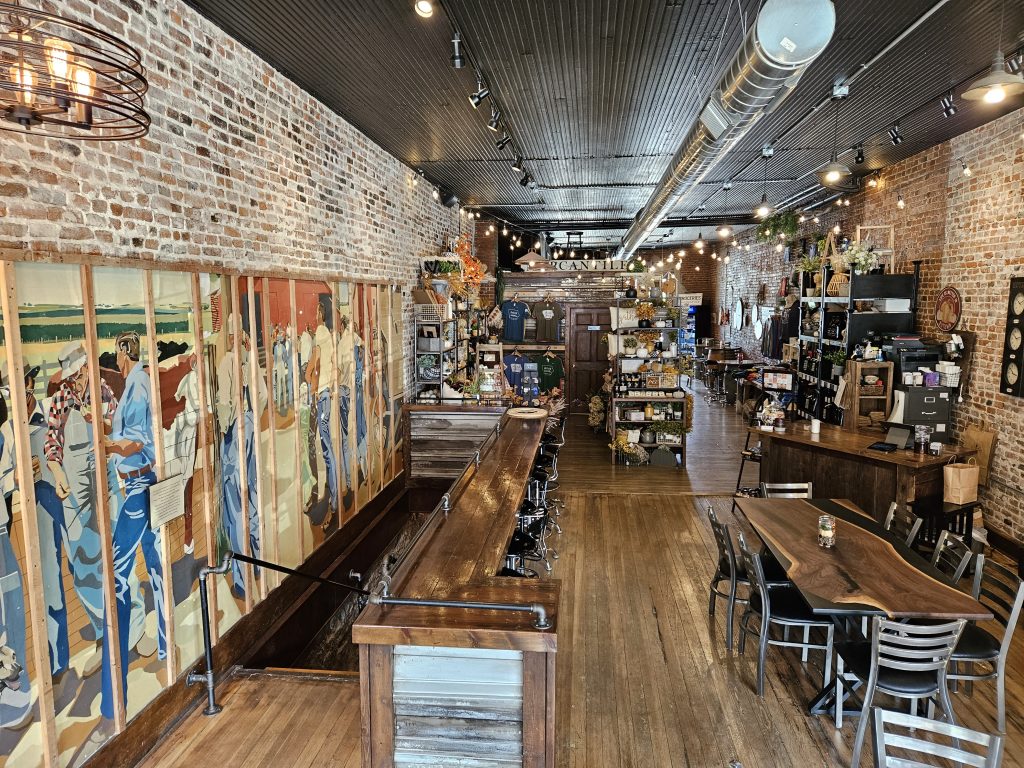
Writers’ Paradise
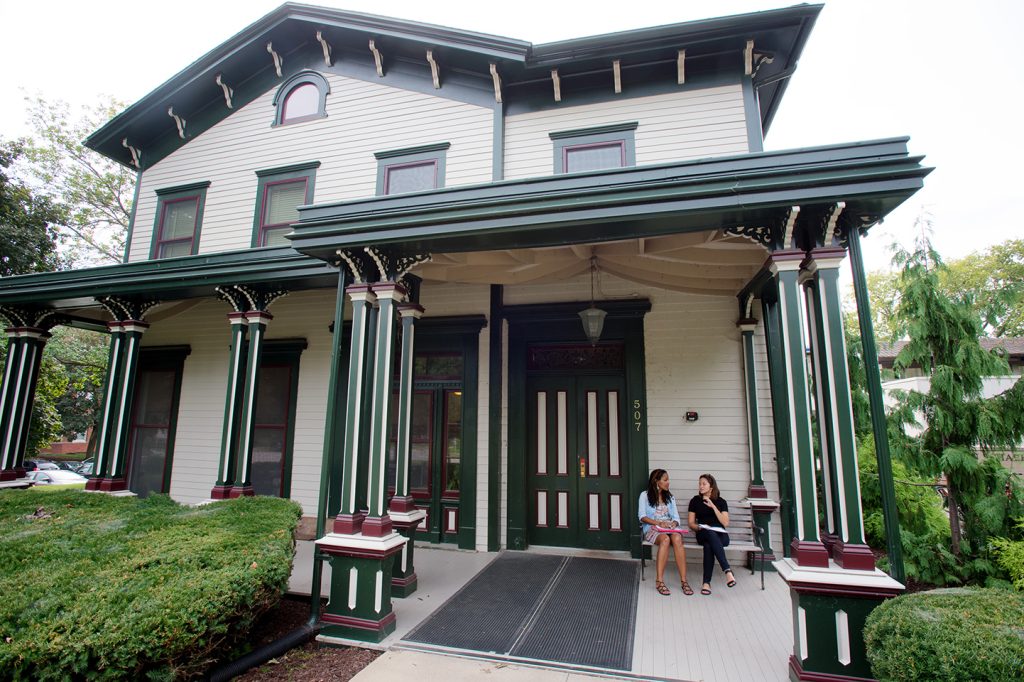
Iowa City
While many know Iowa City as the state’s original capital city, others recognize it as a UNESCO City of Literature. This designation is the result of the University of Iowa offering the first creative writing program in the nation, which came to be known as the Writers’ Workshop and even today continues to mold some of the world’s greatest writers. Instead of murals and sculptures lining the streets, Iowa City’s sidewalks memorialize the many famous authors who began their careers here.
Known as the Literary Walk, the route features artwork and a series of bronze relief panels featuring words by nearly 50 authors, from Kurt Vonnegut and Flannery O’Connor to Tennessee Williams and John Irving. The panels include passages from their works, including children’s books, memoirs, plays and short stories, some of which directly reference Iowa.
Along with the Literary Walk, story lovers and aspiring writers can honor and learn more about the program’s most successful graduates by embarking on a self-guided Literary Tour. This route leads to book sculptures, bookstores like the famed Prairie Lights, boarding homes where authors lived and Foxhead Tavern, which came to be known as the “workshop bar” where writers often gathered.
Lake Life Icons
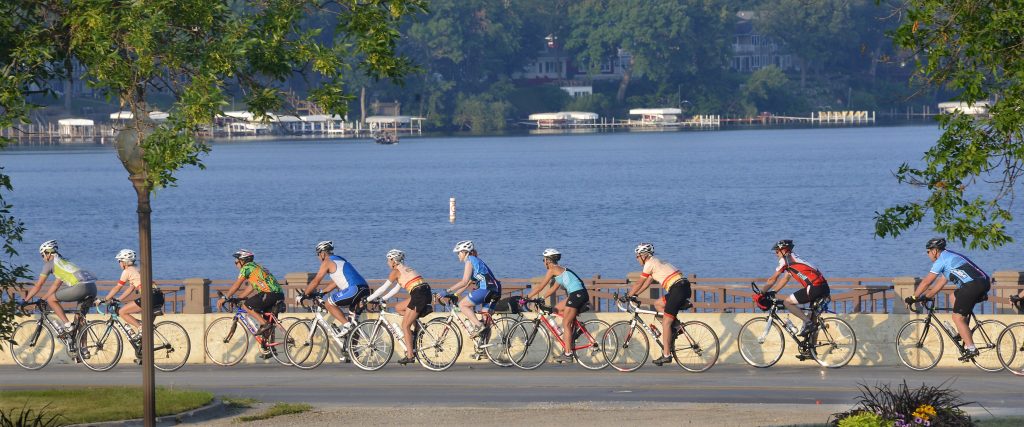
Okoboji Area
While Okoboji is recognized as one of Iowa’s best lake towns, the smaller communities surrounding it feature all the lake life fun as well as a serene place to call home.
Located just 10 miles west of the glacier-carved lakes, Lake Park is one of the fastest growing communities in the state. It boasts its own water adventures on Silver Lake along with two campgrounds, the Silver Lake Fen wetlands and Trappers Bay State Park along with area attractions like the Heritage Square Museum and several locally owned businesses.
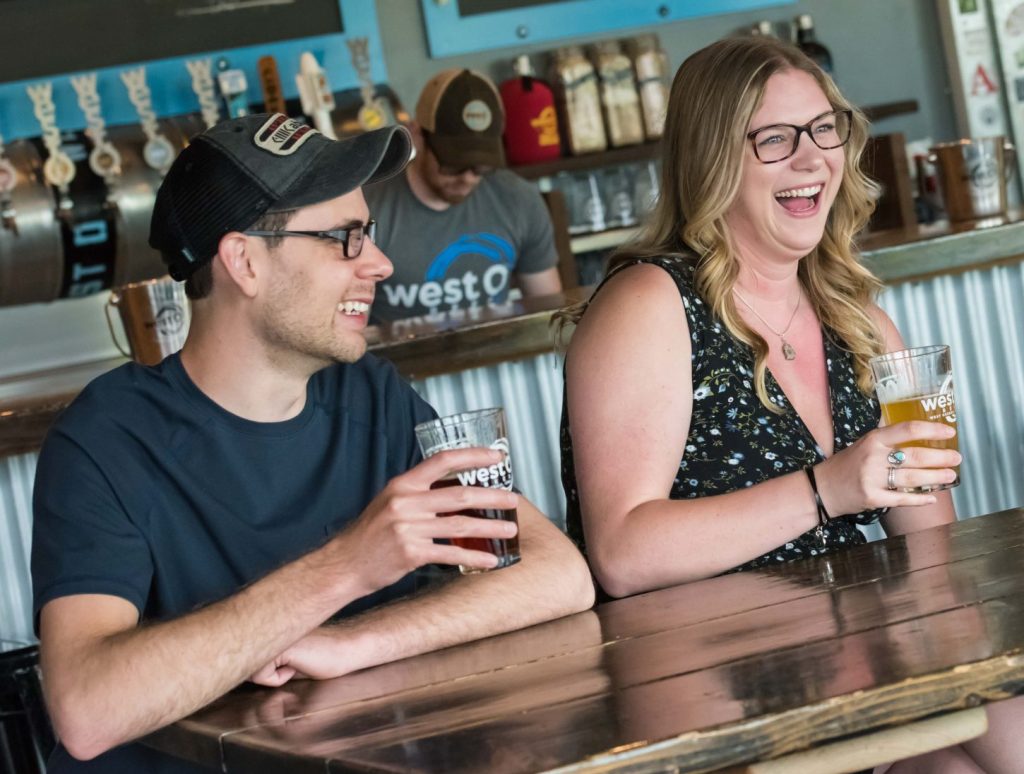
The slightly larger Spirit Lake offers all the amenities of metro living without the hassle. Its vibrant downtown is home to a wonderful mix of retail and service businesses and restaurants, and it borders Center Lake, East Okoboji Lake and Big Spirit Lake. With endless beaches and water recreation, Spirit Lake is also near the area’s famous Dickinson County Nature Center and has several trailheads for the Iowa Great Lakes Trail, which runs for 40+ miles around the lakes.
Also located on the trail, Milford is situated on the southern edge of Lower Gar and West Okoboji Lakes. Don’t let its size fool you; this charming community boasts some of the area’s most well-known attractions. Its tree-lined streets are home to the Okoboji Classic Cars museum and dealership, which memorializes 1960s storefronts and boardwalk scenes, and West O Beer, an award-winning craft microbrewery. The Horseshoe Bend County Wildlife Preserve south of town offers 180 acres to explore via hiking and equestrian trails, playgrounds and even a tubing hill for winter fun.
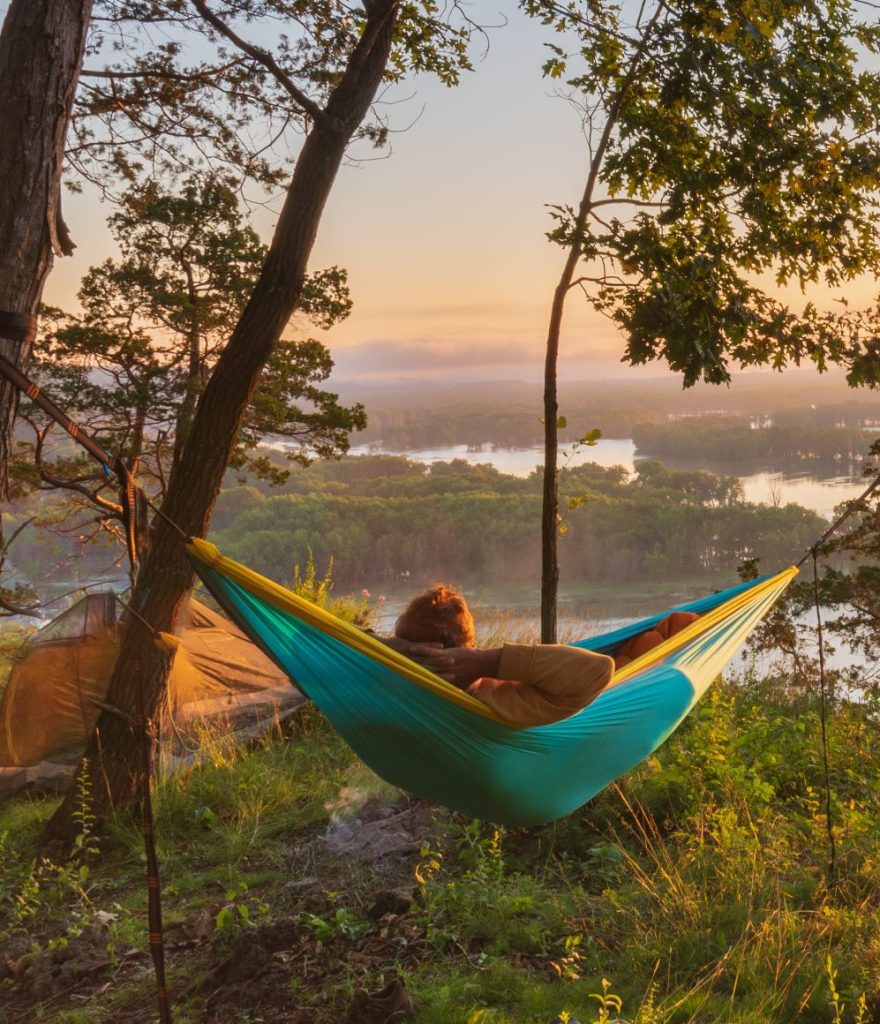
Nature Lovers’ Oasis
Harpers Ferry
For fun on land, Harpers Ferry boasts some of the best outdoor recreation opportunities in the state. Pair history with hiking at Effigy Mounds National Monument, where trails wind around prehistoric American Indian burial and ceremonial grounds. Created by the Effigy Moundbuilders, this regional culture was recognized for the mounds of earth formed in the shapes of birds, deer, bison and other animals. Today, the monument covers more than 2,500 acres and protects 200+ mounds, which can be viewed from the area’s 14 miles of hiking trails. Or, head inside the visitor’s center to learn more about the area’s backstory.
Discover more stunning views at nearby Yellow River State Forest, whose 8,900 acres offer beautiful woodlands and meandering trout streams to explore. It’s divided into six units, allowing visitors to craft the adventure that suits their style. The largest unit, Paint Creek, is most popular for its hiking, mountain biking and equestrian trails, while the Luster Heights Unit includes various scenic overlooks. The Yellow River Unit is a prime place for canoe/kayak launches.
Bike Trails Champion
Cedar Falls/Waterloo
For bike trail adventures unlike anywhere else, head to the Waterloo/Cedar Falls area to explore more than 110 miles of paved multi-use trails. The Cedar Valley Trails system features a series of loops that connect residential areas to restaurants, breweries, parks and more on Main Street in Cedar Falls and in Downtown Waterloo. Pedal through the serene George Wyth State Park or take a pitstop at the Hartman Nature Preserve. Bar or restaurant hop between popular spots like SingleSpeed Brewing, Second State Brewing, The Brass Tap and Mulligan’s. Admire Iowa’s peaceful countryside by pedaling along the trails to nearby Hudson or Evansdale.
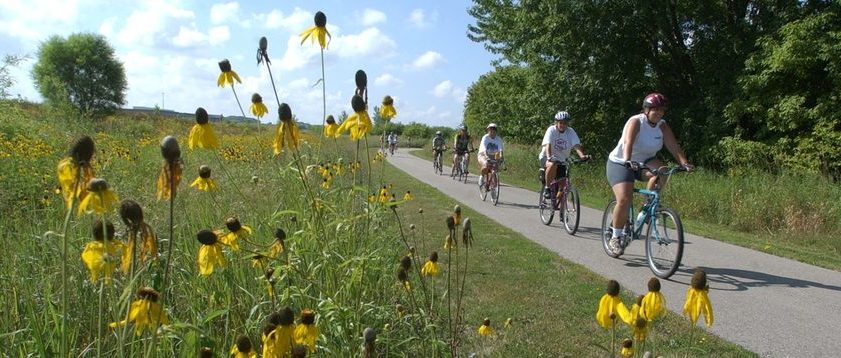
Cultural Cuisine Hub
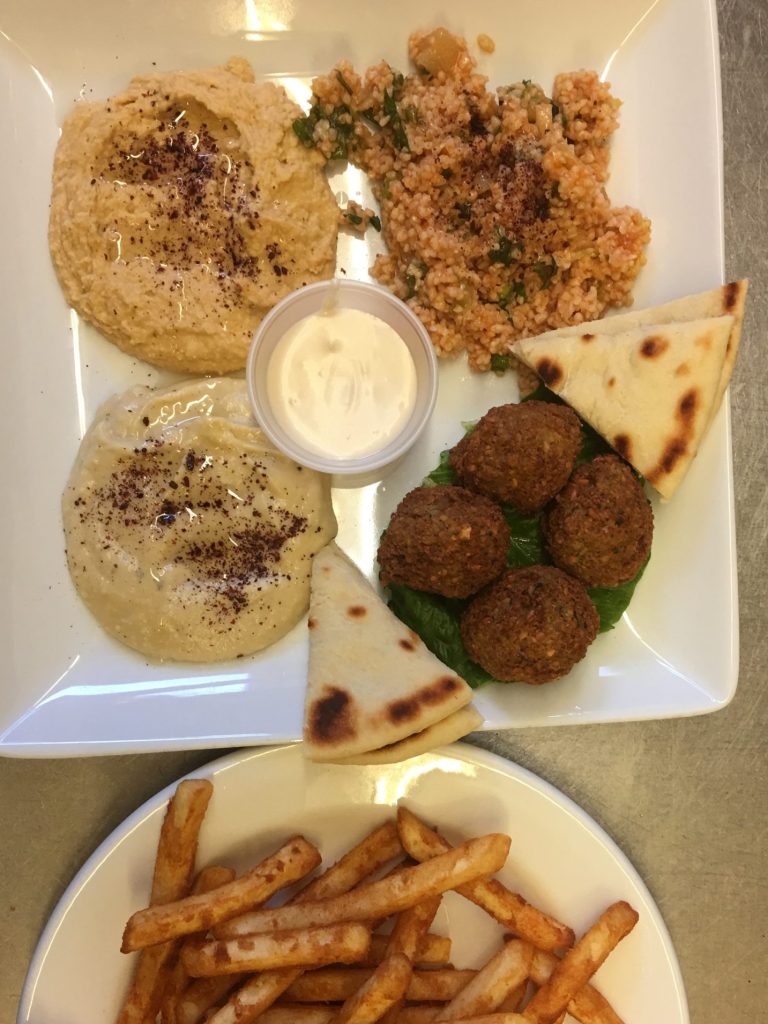
Fairfield
Explore the world without leaving Iowa by sampling Fairfield’s diverse collection of ethnic restaurants. The community was named by Smithsonian magazine as one of America’s best small towns due to its thriving culture, which families from Ethiopia, Italy, Mexico, India, Thailand, China, Turkey, Japan and Vietnam call home. Sample flavors from around the world like Istanbul Grill’s Mediterranean and American fusion dishes; Addis Ethiopian Cuisine’s fresh Injera signature bread; Bountiful Bakery’s French-inspired pastries and coffees; Asian Pho Bistro and Noodle House’s authentic pho and more.
Such international influence has also spread to area attractions. The ICON Art Gallery showcases local and international art pieces within its year-round rotating exhibits. And, the Sondheim Center for the Performing Arts showcases a variety of music, dancing, comedy and theater performances from national touring groups.
For an out-of-this-world experience, stop by nearby Maharishi Vedic City to admire the 1.5-acre open air observatory and masonry sundials. Built in 1991, this small community honors Vedas (ancient texts from India) practices of transcendental meditation and constructing buildings for peace. Today, visitors can tour the community’s public areas or enjoy a stay at The Raj, the community’s award-winning Ayurvedic Health Center.
